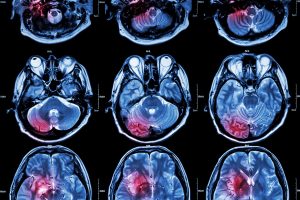Infrared Red Light Tech Could Detect Infant Brain Injury Earlier
 In what’s being hailed as an important step forward in mitigating birth injuries, researchers at University College London have developed a device that uses light to detect brain damage in infants. The team is now planning a clinical trial of the device, called NIRS.
In what’s being hailed as an important step forward in mitigating birth injuries, researchers at University College London have developed a device that uses light to detect brain damage in infants. The team is now planning a clinical trial of the device, called NIRS.
NIRS – broadband near-infrared spectroscopy – is a spectroscopic method that uses the near-infrared region of the electromagnetic spectrum to shine a light into a newborn’s brain to measure its health.
Diagnosing brain injuries earlier
The first days, week, and month of a baby’s life is crucial. If oxygen deprivation or a brain bleed has occurred, your child’s medical team needs to know the extent of the birth injury in order to begin early intervention and necessary treatment.
When an infant suffers a brain injury during or immediately after childbirth, the after-effects can be devastating and sometimes permanent. Brain injuries can result in conditions like cerebral palsy, impaired vision, weakened respiratory or circulatory systems, or even organ failure and death.
How does NIRS work?
The broadband near-infrared spectroscopy system is non-invasive and portable. The device can be used immediately after birth, and there is very minimal health risk when applying it to an infant’s skull. Because a baby’s skull and scalp is so thin, NIRS can easily detect oxygen and blood activity in the brain.
The device is simply placed on the baby’s head and it shines red and infrared light into the brain. It detects any changes in brain oxygen levels and energy usage through differences in color of the light reflected. The sensors on the device then measure the reflected light to determine the health of the brain cells.
How does this help mitigate the effects of birth injuries?
If brain damage is detected early, it allows doctors to intervene earlier and provide appropriate treatment. Dr. Gemma Bale, an engineer from University College, is developing the device. She tells the BBC that the “first week after birth is a really critical time in babies’ development. If we are able to get in sooner to assess the damage, we can tailor treatment to save lives and help prevent disability further down the line.”
Another benefit of NIRS technology is that it’s a less physically invasive procedure than other methods of detecting brain damage. Kathy Beardsall, a neonatologist from Addenbrooke’s Hospital in Cambridge, also told the BBC, “In these vulnerable babies, being able to use a bedside, non-invasive technology would be a great advance in care. It overcomes the problem of having to wait and transfer babies off the intensive care unit for an MRI when they are more stable.”
If your child has suffered a birth injury, talk to the attorneys at Taylor Ring in Los Angeles. Infants and children are among the most vulnerable of our population, and it’s crucial we protect their rights. Our compassionate and experienced legal team can help. Call us today at 310.776.6390 or complete our contact form to schedule a consultation.

Serving clients throughout the Greater Los Angeles and Southern California area, we represent victims in a variety of civil litigation cases. If you or a loved one has been injured, turn to an experienced Los Angeles personal injury or sexual assault lawyer.
Find out more about Taylor & Ring.

